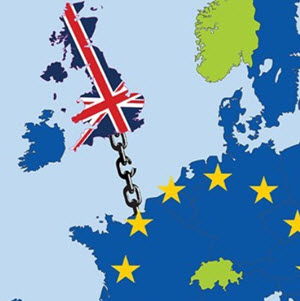Contents
The United Kingdom European Union membership referendum took place on 23 June 2016 in the United Kingdom and Gibraltar. The question was “Should the United Kingdom remain a member of the European Union or leave the European Union?”
The referendum is often referred to as the EU referendum or the Brexit referendum, Brexit being a portmanteau of Britain and Exit.
The referendum was a non-binding referendum, but Prime Minister Theresa May has announced her intention to carry out the wish of the voting majority and invoke Article 50 on the Treaty of European Union before the end of March 2017. Once Article 50 has been invoked, two years of exit negotiations will follow between the EU and the UK. A complete withdrawal can therefore be expected by March 2019.
Why was there a referendum?
 In 2012, Prime Minister David Cameron suggested the possibility of a future EU membership referendum to gauge public opinion.
In 2012, Prime Minister David Cameron suggested the possibility of a future EU membership referendum to gauge public opinion.
As pressure mounted – both from within the Conservative Party and from the rise of rival party UKIP – Cameron announced in January 2013 that if a Conservative government was elected in the general election of 2015, that government would hold a EU membership referendum before the end of 2017.
To the surprise of many political analysts, the Conservative Party actually won the 2015 general election with a majority. The European Union Referendum Act 2015 was introduced to Parliament, and in a speech in the House of Commons on 22 February 2016, Prime Minster Cameron announced that a referendum would be held on 23 June that same year.
Campaign groups
- The official campaign group for the leave side was Vote Leave. This side was also supported by several other independent campaign groups, such as Grassroots Out, Better off Out, Get Britain Out, and Leave EU.
- The official campaign group for the remain side was named Britain Stronger in Europe, but was often informally referred to simply as Remain. Examples of other independent campaign groups that supported the remain side are Another Europe is Possible, Universities for Europe, Scientists for EU, and Environmentalists for Europe. There were also four major partisan campaign groups: Conservatives In, Labour in for Britain, Greens for a Better Europe, and the Liberal Democrat group #INtogether.
A big turnout
The turnout exceeded 72 percent, and was the highest ever for any UK-wide referendum since the UK introduced universal suffrage.
Result
The result of the EU referendum was announced on the morning of 24 June, the day after the referendum. The leave side had won, with 51.89 percent of the votes.
| Votes | Percentage | |
| Leave | 17,410,742 | 51.89% |
| Remain | 16,141,241 | 48.11% |
| Valid votes | 33,551,983 | 99.92% |
| Invalid or blank votes | 25,359 | 0.08% |
| Total votes | 33,577,342 | 100.00% |
| Registered voters/turnout | 46,500,001 | 72.21% |
In England and in Wales, a majority of votes was leave-votes. In Scotland, in Northern Ireland and in Gibraltar, a majority of the votes was remain-votes.
Latest news
- Consequences of Brexit
- MiFID II & Brexit
- Referendum followed by 106% rise in Irish passport applications from Britain in November
- Brexit Britain: Is the economy tanking?
- Brexit Britain: What’s going on?
- No current plans for a British independence day on June 23
- UKIP: James quits; Farage steps back in
- Brexit challenge expected to quickly reach Supreme Court
- Will there be a second Scottish independence poll?
- Stock markets plummet in the wake of Brexit – investors looking for alternative investments

 (Closed)
(Closed)